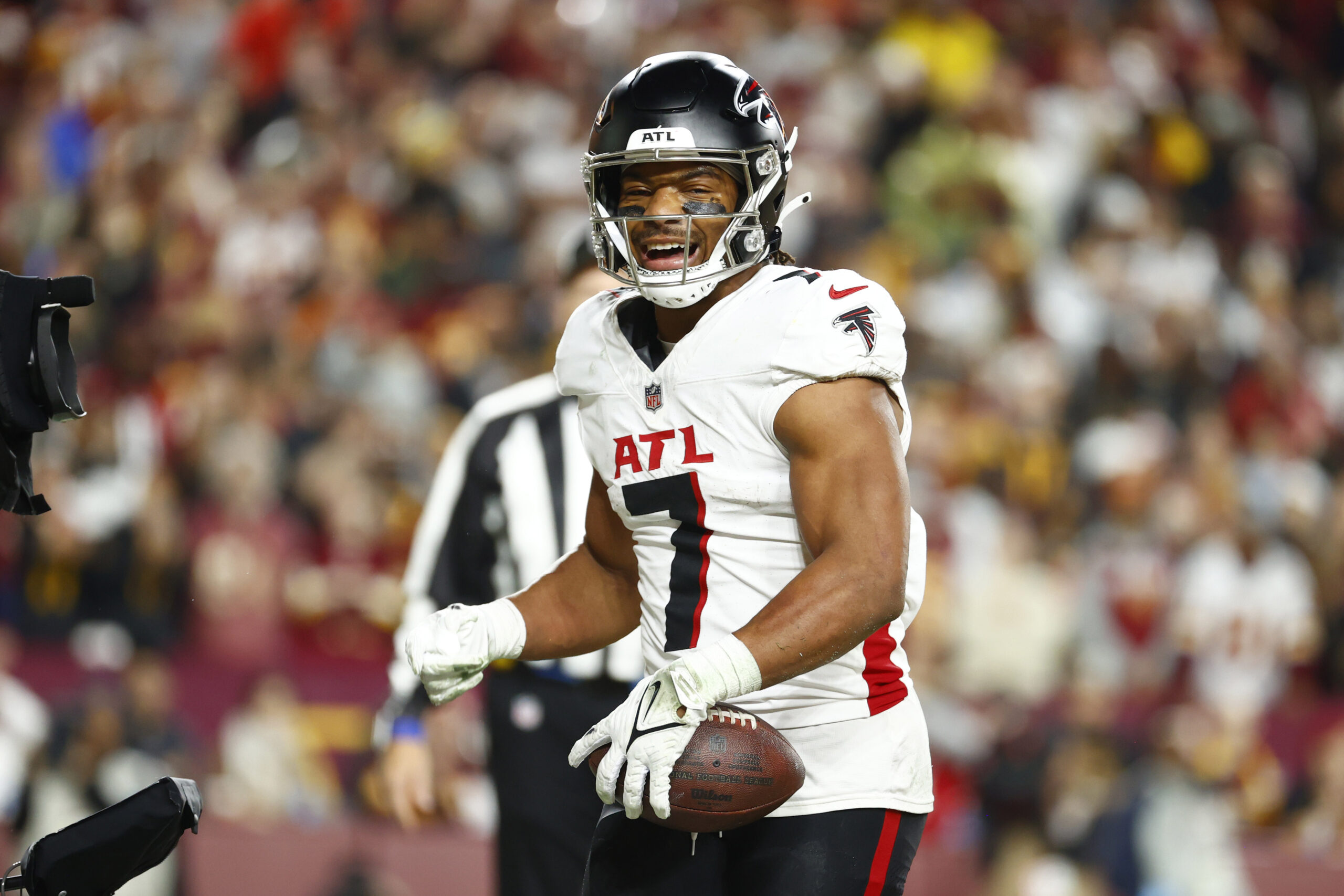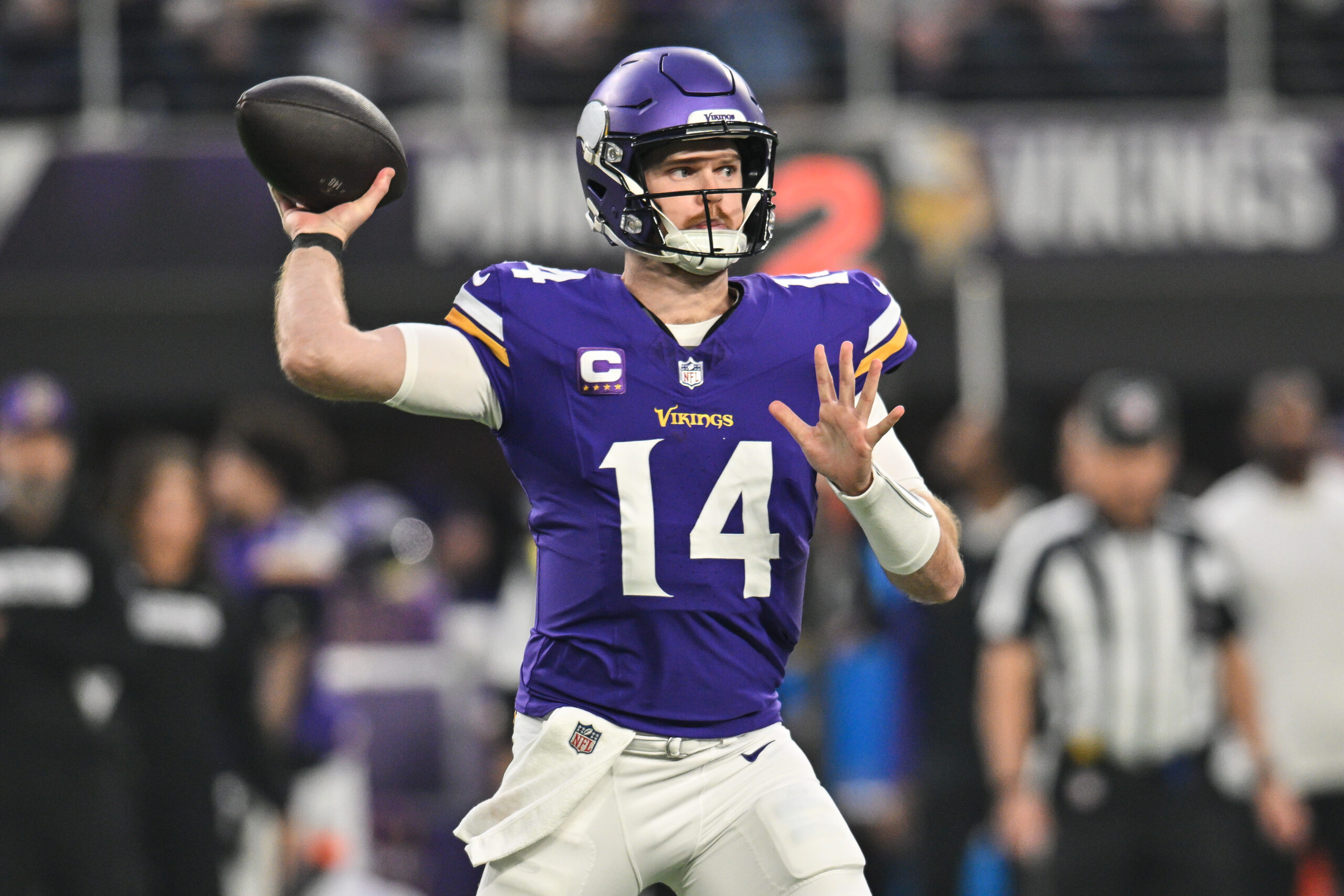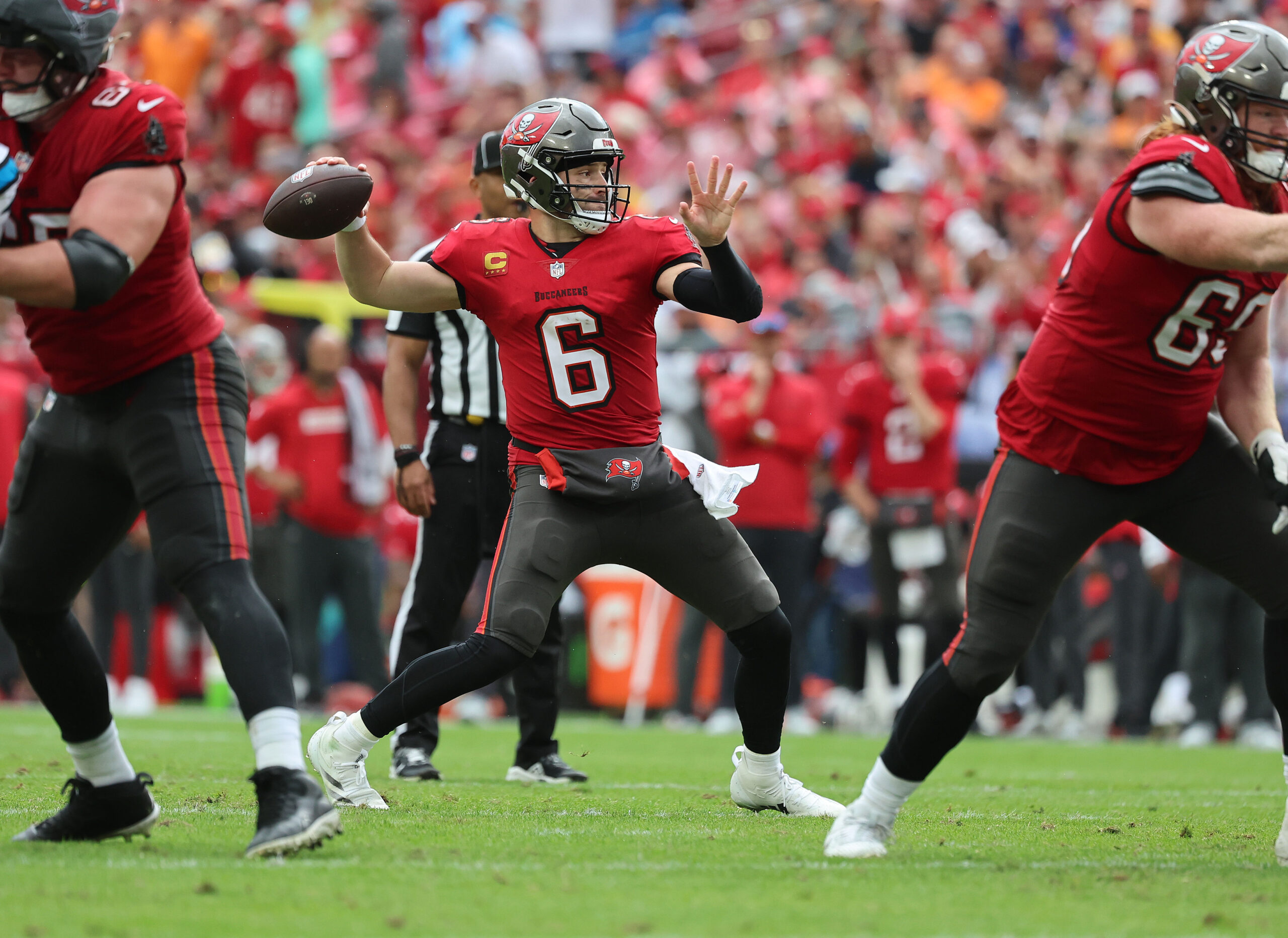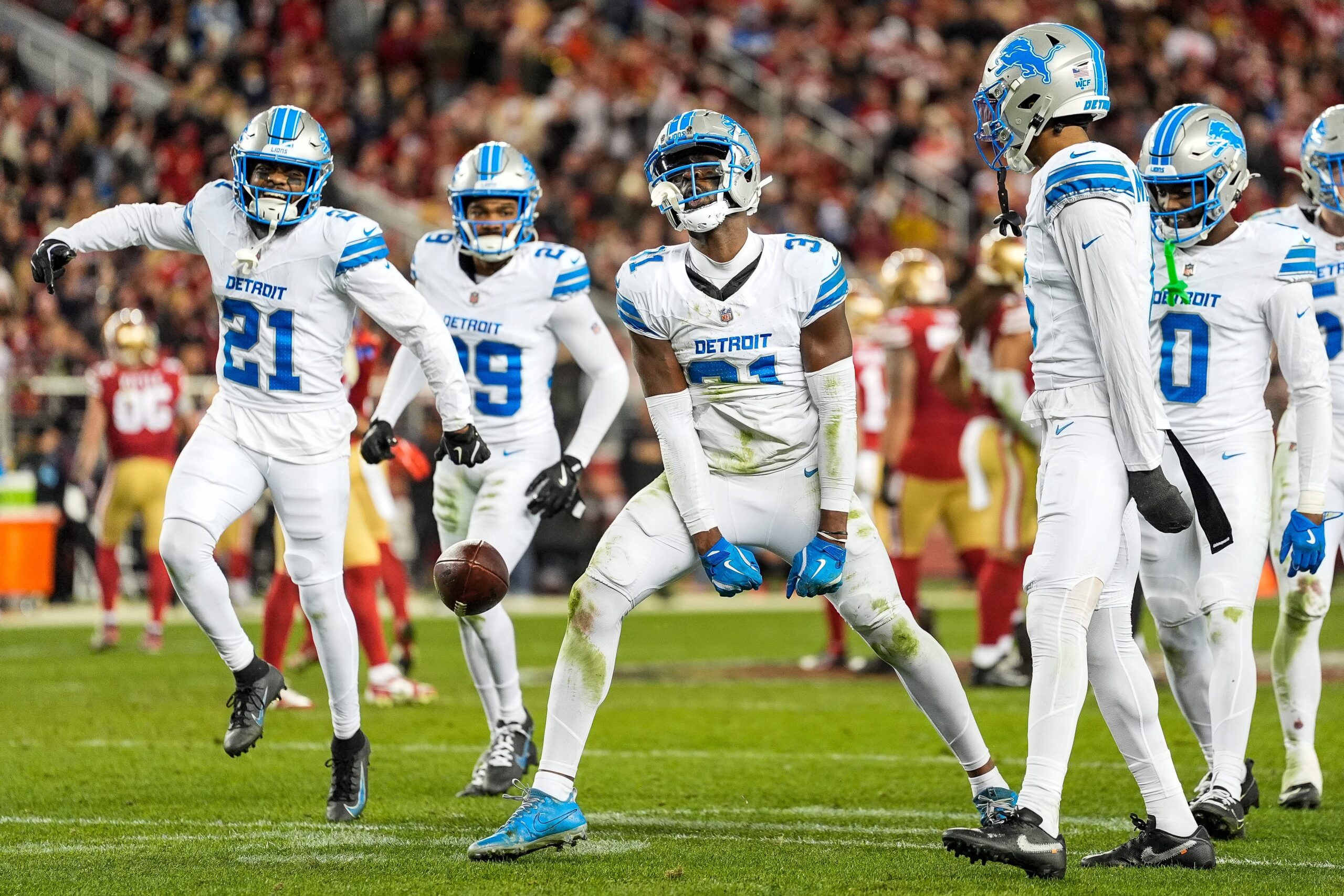NFL Analysis
7/31/24
9 min read
Patrick Mahomes' Next Evolution Could Be His Best One Yet

The last play of Super Bowl LVIII was a short pass near the goal line. Patrick Mahomes threw to an open Mecole Hardman, a receiver the Chiefs allowed to leave during free agency and then re-acquired at the trade deadline to help a struggling receiving corps, for the game-winning overtime touchdown.
On the 13-play, 75-yard drive, Mahomes had nine dropbacks. He had a 19-yard scramble on a third-and-1 and completed all eight pass attempts. No pass traveled more than five air yards. It was a perfect, controlled, and surgical drive. The touchdown throw to Hardman was the culmination of another evolution of Mahomes.
That passer was a long way from the Texas Tech gunslinger.
Mahomes has been great since he stepped on an NFL field. There are two MVP awards and three Super Bowl wins as proof.

What's made Mahomes transcendent is how he's changed and rapidly adapted throughout his career. Through only six seasons as a starter, he's evolved multiple times, each necessary — sometimes to take his game to the next level, sometimes just to survive.
When Mike Trout came into MLB, he was immediately the league's best player. He kept getting better by improving on something each year, often turning a weakness into a strength. High fastballs were a problem; the following year, he killed them. He stopped chasing pitches out of the zone. One year, he decided he should steal more bases, so he did. Once he mastered hitting, he turned to improving his defense.
This has been the Mahomes arc, but with all the added factors that come with an 11-on-11 game. Mahomes needed to adjust to the roster around him and how defenses across the league treated him differently than any other quarterback.
Mahomes vs. Two-HIgh Coverage
In Mahomes's first season as a starter, the Chiefs unleashed an aerial attack the league was not ready to defend. Paired with Tyreek Hill, Kansas City had 76 pass plays of 20 or more yards, tied for the fifth-most for a team since 2000. Mahomes had a 9.1-yard average depth of target that was sixth in the league, but no player had more attempts of 20 or more air yards than Mahomes's 88.
That version of the offense still carried into the next season, though Mahomes relied less on deep shots and became a better intermediate thrower, upping his rate of throws between 11-19 yards to 20 percent, up from 17.9 percent. He also picked better spots on deep throws, completing 44.9 percent of those attempts.
The next shift came in 2020 when defenses started adjusting their play to stop the Chiefs from making explosive gains down the field. As the rise of two-high structures crept across the league, defenses started using more Quarters coverage against the Chiefs to deter deep passing.
Mahomes saw two-high coverages on 45.6 percent of non-red zone pass attempts, ranking sixth in 2020, while the league average was just more than 40 percent.
While the Vic Fangio two-high structures spread across the league, even those defenses were still about single-high coverages. The two-high pre-snap shell allowed defenses more versatility in the defensive backfield to disguise coverages, but they were still heavily Cover-3 based. There were still few quarterbacks and offenses against which defenses truly deployed those split safety coverages.
It wasn't just that teams were playing more two-high against Mahomes. Many defenses were going out of their way to change their defense structure when they played the Chiefs to play this way.
When Mahomes started seeing those two-high coverages, he patiently waited the coverage out and threw short to open receivers more often. This led to a rise in the rate at which Mahomes threw within 1-10 air yards. Only 42 percent of his throws had gone to that depth in the first two years of his career, but that jumped to 47 percent in 2020 — primarily because of more two-high coverages.
This wasn't a magic fix, though. Mahomes still tried to throw deep and did so more often against two-high coverages, typically attempting to split the safeties in the middle of the field. There was a more significant drop-off in intermediate passing.

Still, in that 2020 season, Mahomes had a league-best 1.0 interception rate with a league-high 316 yards per game.
League of His Own
In 2021, we saw the biggest shift in how defenses sold out to stop explosive passing. Mahomes saw two high coverages on 50 percent of his non-red zone dropbacks, while the league average was 42.2 percent. Like the previous year, Mahomes saw more Quarters coverage, while the two players who saw more split-safety coverages, Ben Roethlisberger and Matthew Stafford, saw more straight-up Cover-2.
Roethlisberger was there because, by his final seasons, his game devolved into standing in the pocket, getting the ball out as quickly as possible, and throwing low-percentage go balls down the sideline. Defenses could just keep two safeties deep on the outside to defend against those throws.
Stafford was in his first season with the Rams, playing a vertical game out of empty, which forced defenses to attempt to cover every area of the field. The Rams killed the middle of the field off those looks. The next season, defenses adapted to playing more single-high and dropping a safety to cut off the intermediate crossing routes, forcing the Rams to struggle in 2022 and reinvent the offense in 2023.
This is to say that Mahomes was still in a league of his own with how defenses tried to stop him. Mahomes and the Chiefs were still figuring out how to attack it. In 2021, Mahomes saw his biggest jump to throws behind the line of scrimmage, with the Chiefs leaning more into the screen game.
Because of the deep safeties and more players in coverage in general, Mahomes became so good against the blitz that defenses refused to send an extra defender in the pass rush. There was so much space to exploit on those throws.
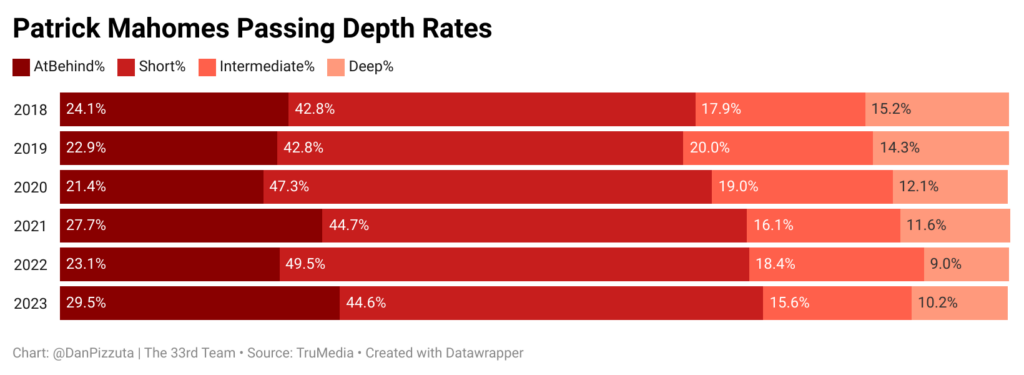
At this point, teams were not just changing the structure of the defense to slow down the Chiefs; some teams were shifting the construction of their rosters. The Bills leaned into investing in a deep defensive line rotation to rush four and have the coverage to stop Mahomes.
In the Divisional Round that season, Mahomes threw 75 percent of his passes between 1-10 air yards against Buffalo, just patiently picking apart the holes in the defense on the way to an overtime victory. Mahomes adopted the passing profile of a game-manager quarterback to keep the offense moving while still having the ability to strike for a Mahomesian throw whenever necessary.
The 2021 season saw the Chiefs work out some of the offense's issues, which set the stage for the following season when Mahomes would become completely methodical without Hill.
There's No Problem Mahomes Can't Solve
That 2022 Chiefs offense gave some observers pause because of the lack of explosive plays we had grown accustomed to seeing. But Kansas City was far and away the best offense in the league. There was as big of a gap in EPA per play between the Chiefs and the No. 2 Bills as there was between the Bills and the No. 15 team.
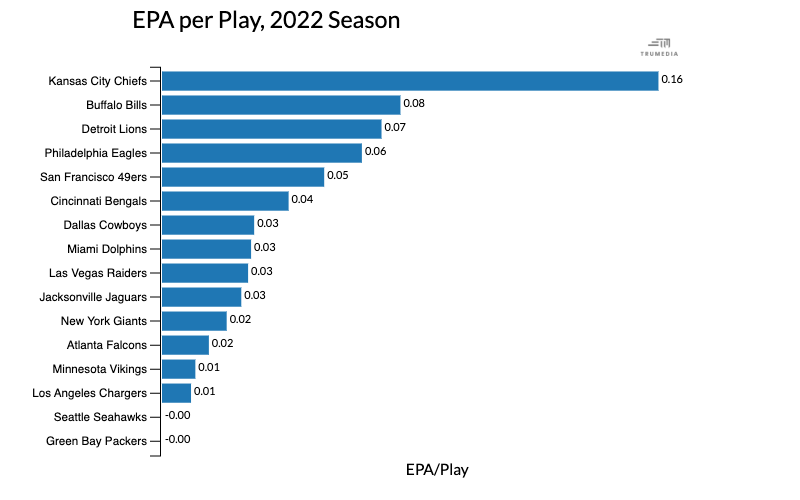
Going into that season, there was a bet that just having Mahomes could solve any problem, and that has not been proven wrong yet. The 2022 season ended with a Super Bowl victory that capped off that bet.
Mahomes had a near-perfect second half against the Eagles, going 13-of-14 with just a 4.29-yard aDOT and 2.23 seconds to throw while averaging 0.70 EPA per play.
The 2023 season further confirmed that theory. While the Chiefs struggled through the regular season, and Mahomes had his worst statistical season, the team persevered because of its top-tier defense. There was another level found in the playoffs, as the Chiefs won their second-straight Super Bowl.
The Chiefs have figured out how to get by with the constraints put on the offense, but they're approaching the 2024 season with the hope of not being constrained at all.
Throughout the years, Mahomes has dropped his aDOT as those defenses have sold out to stop the deep pass, and the Chiefs have started to lack an explosive receiving option.
Here is Mahomes's rolling six-game aDOT throughout his career.
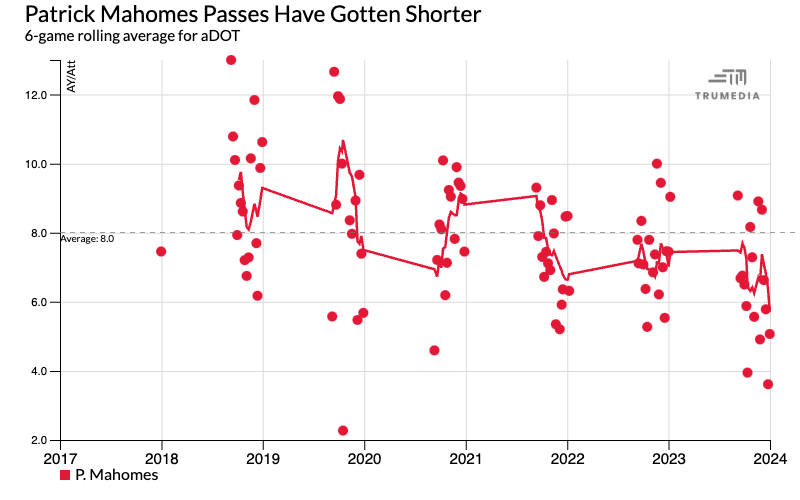
That is going to change for this coming season. Kansas City signed Marquise Brown in free agency and drafted Xavier Worthy, who ran a 4.21-second 40-time at the combine. Neither player should be expected to match Hill's impact, but this might be the first time Mahomes can have two legitimate field stretchers at the same time.
Kansas City has tried to get that second player — Hardman's speed never fully translated down the field — but it hasn't translated in practice.
Reaching His Final Form
With a deeper and faster receiving corps, Mahomes' next evolution could look like the early-career downfield aggression but with the poise and understanding of his current iteration. At worst, those deep threats could open more space in the middle of the field for the tight ends and other receivers, more than has been the case during the past two seasons.
The Chiefs have emphasized the deep pass during offseason practices. Mahomes said Any Reid has joked with him about making the effort to get the ball down the field more.
"If I don't, he throws little jabs at me like, 'Oh, you want to throw the check-down here?'" Mahomes said during OTAs. "I'm like, 'I got you, Coach. We're going to push it.' It has been fun.'"
Mahomes has been great at adjusting to how opponents have tried to defend him, but the 2024 season could showcase a quarterback going back on the offensive. With all of the experience of the past few seasons, this could become the fully formed version of Mahomes — a quarterback who has everything available to him at any time.
Mahomes has always been able to make any throw, but given the situation, those haven't always been options. That could change this season.
How this offense is structured could be one of the most interesting developments to watch in the early stages of the season. Every version of Mahomes has been great, and no quarterback has been better at adjusting his game to the situation around him.
This upcoming version could be the best combination of all of them.


